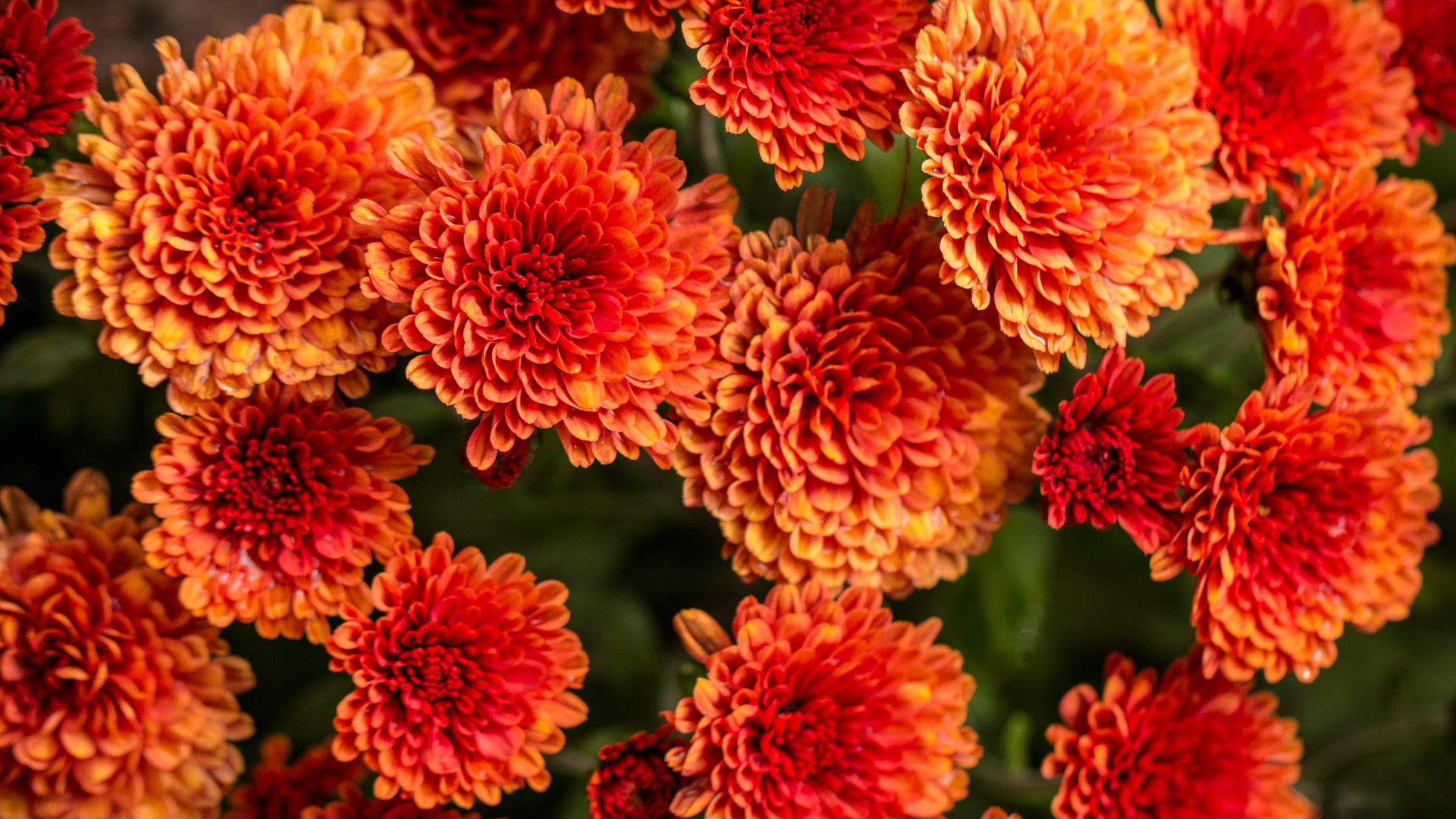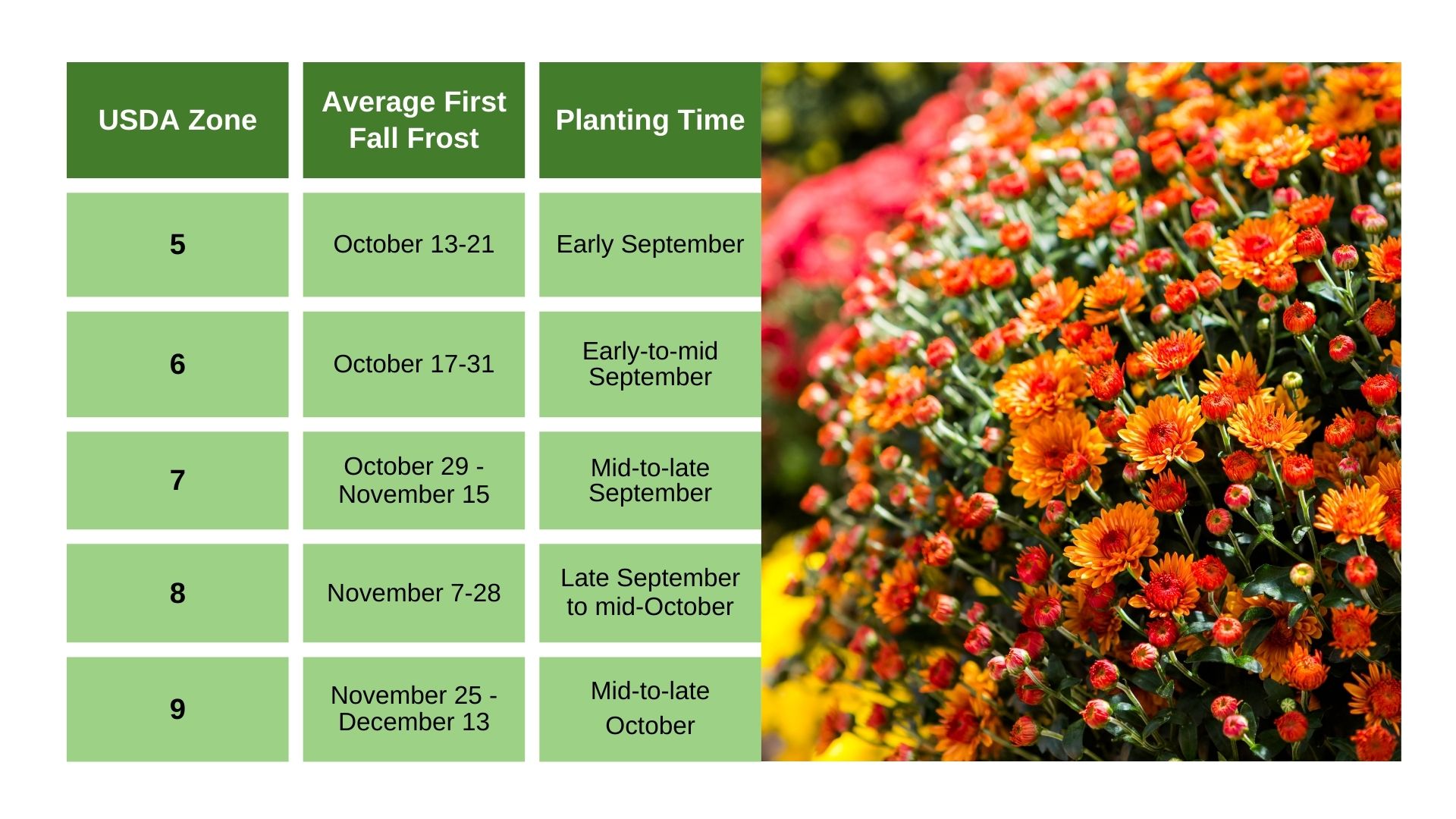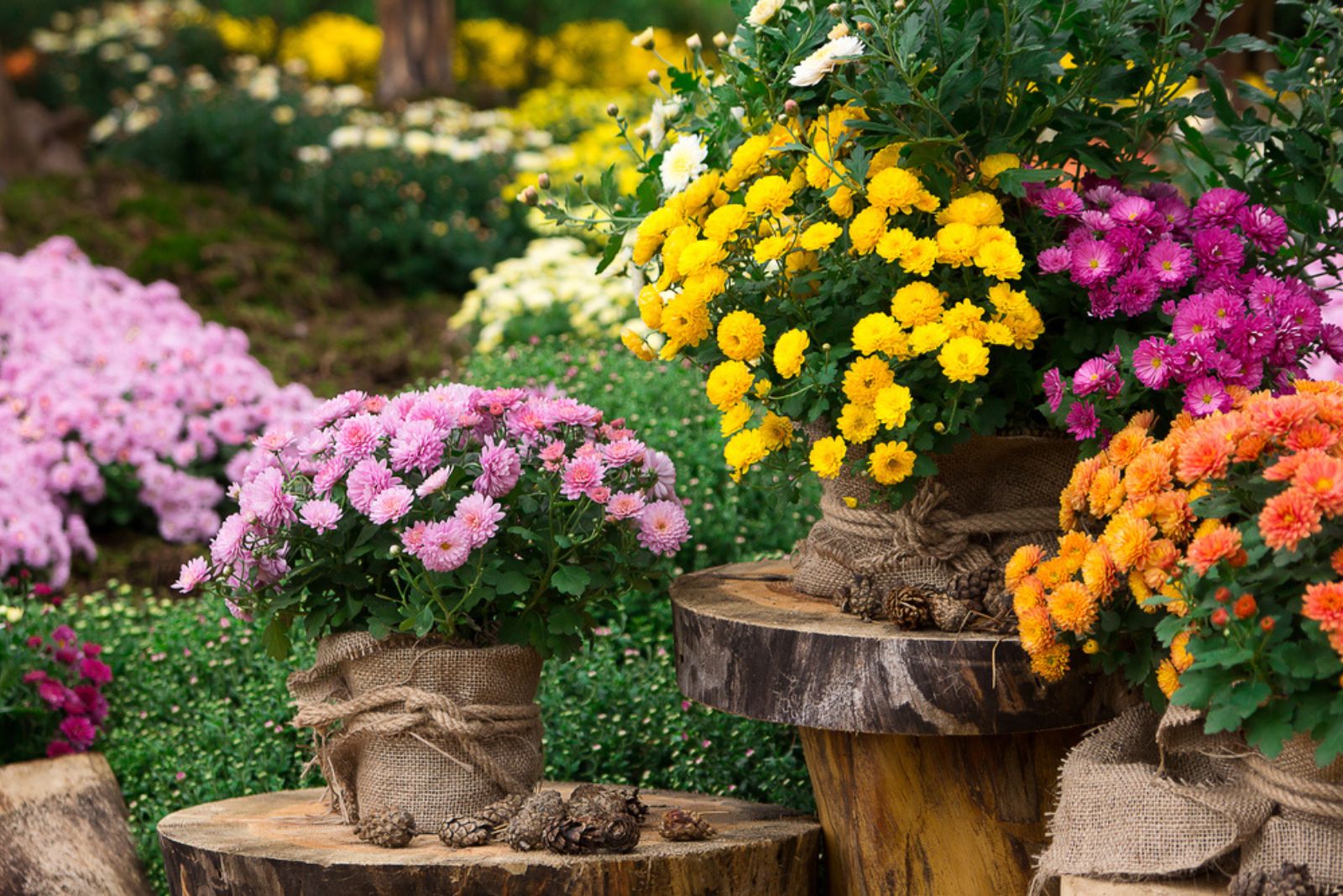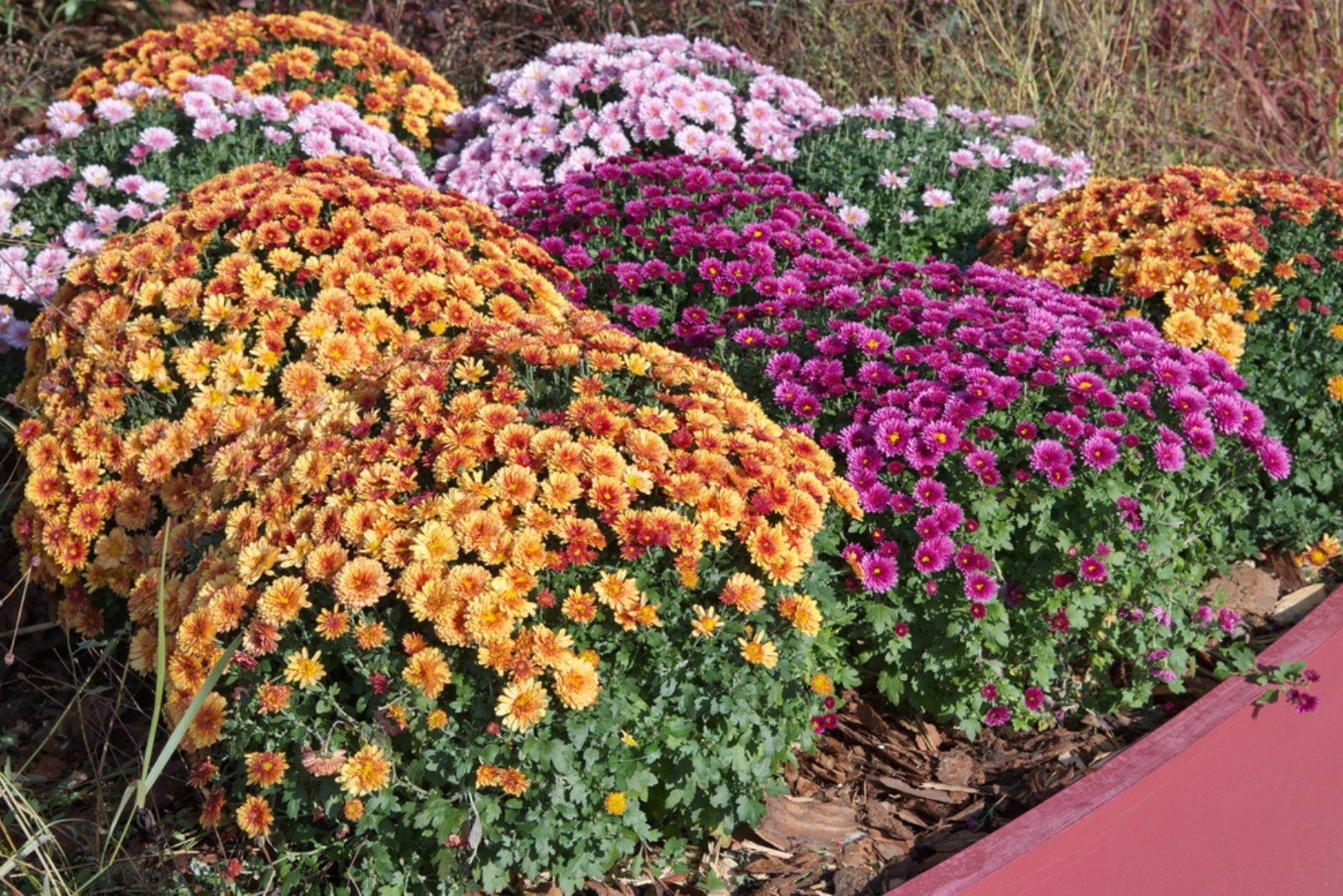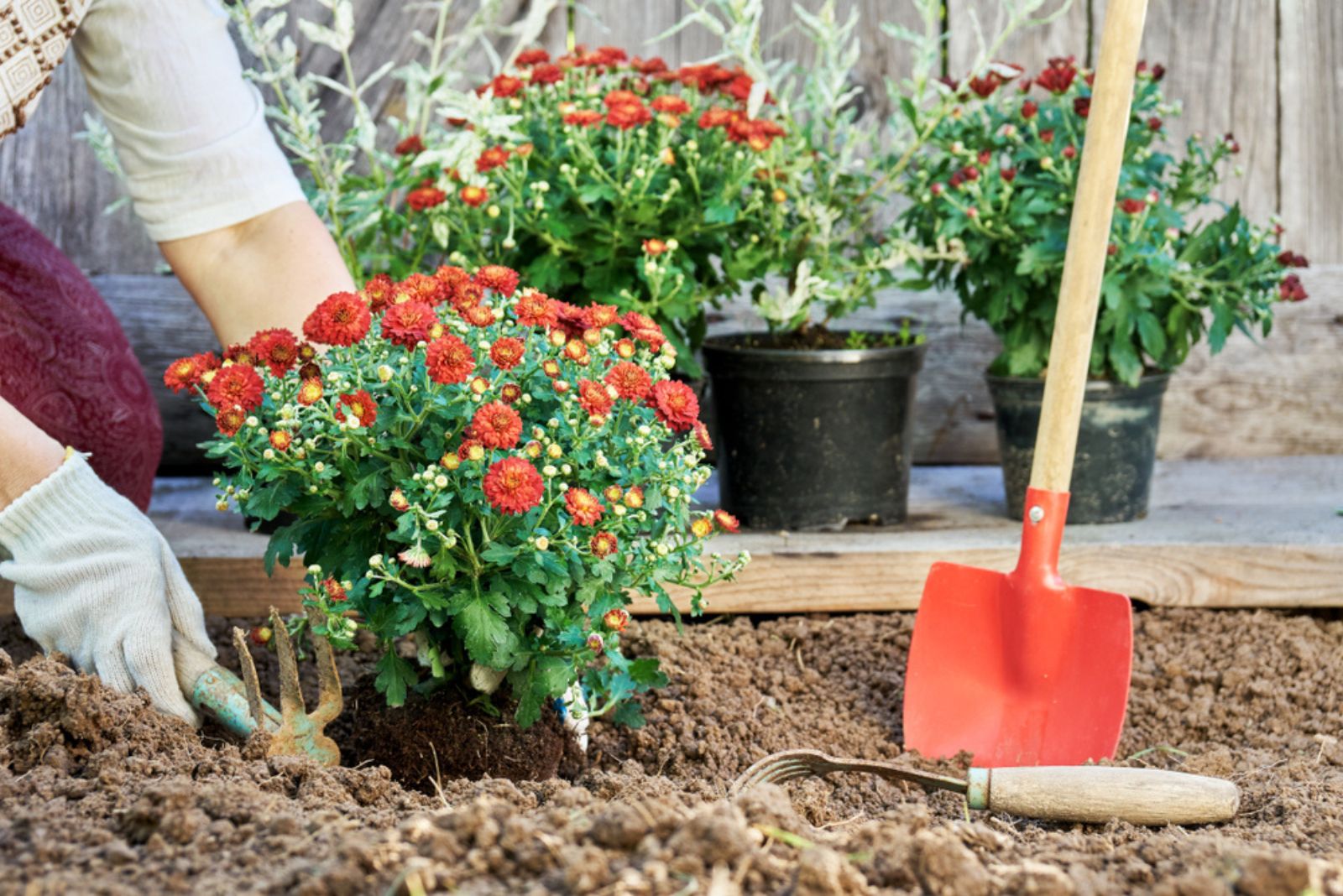Mums, aka chrysanthemums, are many gardeners’ favorites come fall. You can find them anywhere you go, they’re easy to grow and maintain, and they provide a late-season color that adds so much to your fall and early winter garden.
However, one thing that’s crucial to master is planting them, or rather the timing of it all.
This will set your plant up for success and help you grow it as a perennial rather than an annual.
Technically, different mum types and different USDA hardiness zones have different timings for planting mums, but I don’t want to get ahead of myself.
Here’s everything you need to know about planting fall (garden) mums!
Let’s get started!
The Short Answer
The best time to transplant fall mums to your garden is obviously fall, or rather at least a month and a half before the first fall frost date. Depending on your zone, that could mean anywhere between late August and mid-October.
This technique will allow your plant to establish a strong and healthy root system as well as start growing in the same spot where it will spend its first winter.
Additionally, you can plant chrysanthemums in spring and nurture them throughout summer, enjoying their grace all year long.
The Long Answer
Chrysanthemums are ideal perennials for fall, but there are certain things about their planting that you need to master before placing one in your backyard.
Of course, putting them in the ground well before the first frost is a must, but there are things such as hardiness zones and the variety you have that greatly affect this.
Here are some things that can help you decide when to plant fall mums!
Timing For Different Zones
Chrysanthemums are generally hardy in zones 5-9, so you should plant them from mid-October onwards.
For instance, if you live in zone 5, you should plant mums in mid-October, but if you live in zone 9, transplant these flowers outdoors from late November to mid-December.
Of course, let your first fall frost be your guide and follow it. It is different for every single region, but here are some guidelines that can help you out.
Generally speaking, you should plant your chrysanthemums approximately six weeks before the first fall frost date so that they can adjust to their new growing conditions before winter.
Of course, you can plant them later if you haven’t bought them in time, but they might have a harder time adapting to their new environment.
Additionally, you can grow these plants in containers, raised beds, etc. Just make sure to transplant them as soon as you buy them because frost can hurt them while they’re young.
And if your planting season is already done and you’re not sure whether to buy mums or not, you can just wait until spring. This is a great season for establishing perennials such as chrysanthemums.
Finally, planting these flowers in summer isn’t optional because it is too hot for these plants and it will stress them out unnecessarily.
Types Of Mums
There are two main types of chrysanthemums you should be aware of – garden and florist mums.
Garden varieties, also known as fall and hardy mums, are quite tolerant to cold and you can plant them in fall and leave them outdoors to overwinter.
Florist ones – usually found in gift pots in stores – are only hardy in zones 7 through 9. Therefore, they’re not suitable for colder climates and you should keep them indoors over winter.
Chrysanthemums can get 2-3 feet tall, although there are more compact varieties that won’t exceed 12 inches.
They start blooming in midsummer until the frost does them in. Also, mums aren’t aggressive and won’t overtake your garden.
Planting Mums
Mums are great oxygen-producing plants, but there’s more that’s even better than this! They are easy to plant, they don’t put you (or themselves) through a lot of stress, and they are fairly undemanding.
After you purchase garden mums at your local nursery, it is time to move them to their permanent home.
• Transplant your mums on a cloudy day and keep them well hydrated because this will minimize the transplant shock they will inevitably go through.
• Keep your mums approximately 18-36 inches apart since this will ensure proper airflow and won’t overcrowd them.
• Make a hole in the ground slightly larger than the pot in which your chrysanthemums came and amend the soil with compost.
• Gently take your mums out of the container and move them into the hole. Backfill it with more soil and gently pat it down to compress it a bit.
• Water your newly planted chrysanthemums thoroughly to help the soil compress a bit and reduce transplant shock.
Mulching
After you plant your mums and give them some time to establish, it is time to mulch them.
These plants have shallow roots and can quickly get damaged by the cold or drought if you don’t do something about it. Mulching the plant with compost or leaves will help regulate the soil temperature and reduce evaporation, keeping your plants healthy.
Remember, using too much mulch in your garden is a bad idea, but it can be helpful in winter.
Lay 4-6 inches of mulch around your chrysanthemums before winter to help insulate the soil and keep these plants warm. And once the temperatures rise, reduce the amount of mulch to 2-3 inches at most.
Growing Conditions For Chrysanthemums
Now that you know how simple it is to transplant your chrysanthemums, it is time to learn how to care for them.
Growing and maintaining mums is pretty straightforward. Give them plenty of sunlight, well-drained soil, and some water and they will thrive.
Here are some more details about their requirements!
Light
Even though they thrive in colder conditions, mums still need full sun to perform best and bloom abundantly.
That means keeping them in a spot where they can get at least 6-8 hours of direct sun each day.
Of course, they will survive in light shade, but their blossoms would be fewer and of less quality.
Water
Keep your chrysanthemums consistently moist but never wet. That means giving them about 1-2 inches of moisture per week, or less if you live in a rainy region.
Watering potted mums is easier because all you need to do is check whether the top portion of the soil is dry. If it is, you can go ahead and irrigate this fall beauty.
Soil
Make sure that the growing medium is nutrient-rich and well-draining when planting chrysanthemums. You can achieve both things by amending your garden soil with compost before planting.
And if you prefer growing these plants in pots or raised beds, use a high-quality potting medium. As long as the soil is loose, airy, well-draining, and rich in organic matter, your mums will thrive.
Growing Mums In Pots And Raised Beds
One of my favorite fall garden ideas is adding chrysanthemums to my patio. And that means growing them in containers.
Of course, you can style these plants however you like and add them to your container or raised bed garden.
You only have to make sure to use a well-draining, fertile, and airy potting medium. And when choosing a proper container, make sure it is about 8 inches in diameter and has at least one drainage hole, which will prevent overwatering and root rot.
On the other hand, when filling your raised beds, place logs and branches at the bottom and backfill everything with a mixture of topsoil and compost.
You can allot an entire raised bed solely to your mums or you can mix everything up and grow some cosmos and even blue kale for a unique visual interest.
Remember, as long as you keep the growing medium damp (but never wet and soggy) and give your mums plenty of sunlight, they’ll shower you with countless flowers.
Annual Maintenance
Yearly mum maintenance isn’t that hard, and although there are numerous tips for keeping your fall mums alive, such as pinching, you don’t have to do it all the time.
Fertilizing, pruning, removing early flowers, and getting rid of weeds is all the care you need to invest in your chrysanthemums to have them thriving.
And the best part is that you don’t have to do it around the clock!
Fertilizing
Feed your mums with an all-purpose fertilizer in spring when they’re just starting to push out new growth.
This additional boost will help them develop their roots and prepare them for an abundant blooming season.
Pruning
There are two pruning techniques you should employ when growing mums – deadheading and cutting the entire plant back.
You should remove the spent flowers in fall to encourage a fresh flush of blossoms and prolong the blooming season.
And don’t forget about heavy pruning. It is important to cut back mums once their stems are all brown and wilted. However, don’t do it immediately after the first frost or while the stems are still green.
Wait until the entire plant is brown and cut it about 2-3 inches above the ground. You can do this in late fall or early spring.
If you’re pruning your mums in fall, make sure to mulch them thoroughly so that their roots don’t freeze.
Spring pruning is fairly safe, but make sure to do it before your plant starts pushing out new growth.
Pinching
Removing early buds and flowers is a common technique when growing mums. You can pinch them until July so that your mums can divert their energy towards their roots and developing branches.
Once mid-July comes, stop pinching your chrysanthemums and enjoy their massive blooming season once the time comes.
Without employing this method, your mums will flower less abundantly and have more of those unsightly long and flowerless stems.
Weeding
Finally, don’t forget about removing those pesky weeds since no plant wants to compete for moisture, nutrients, and even sunlight.
Mulching can be of great help here, but even removing weeds one by one as they appear is of great help to your plant.
And it will keep your garden well organized and clean.
What If You Miss The Planting Time?
You don’t have to throw away your mums just because you missed the planting time. You can always try and plant them now or overwinter them indoors in a container.
When overwintering your mums in pots, make sure to keep them in a cool spot, but don’t let them freeze. This will help your plants stay in dormancy and prevent them from wasting their energy, while keeping them safe from frost damage.
Don’t let them dry out completely and transplant them outdoors in early spring. Just prune them to a couple of inches off the ground before moving them to their permanent location.
If you decide to take your chances and plant your mums outdoors now, don’t forget to mulch them with 4-6 inches of mulch to insulate the soil and keep them warm during winter.
And when spring comes, cut your mums back to a couple of inches off the ground and remove the excess mulch (leave up to 2-3 inches).
If the winter wasn’t too harsh and didn’t damage the roots, you should soon see the new growth.
Are Mums Good Pollinator Magnets?
It really depends on the variety you decide to grow because some varieties have complex flowers and pollinators can’t get to the nectar that easily.
However, if you grow more traditional and simple mums, such as ‘Cremon,’ ‘Disbud,’ or ‘Hillside Sheffield Pink,’ you’ll attract plenty of bees and butterflies.
Final Thoughts
Fall mums are a perfect addition to your fall garden. Their colorful flowers and the ability to withstand harsh winters outdoors is everything gardeners wish for.
Of course, it is important to know when to plant fall mums to get the best results and more color year after year.
And the best part about them is that with the smallest amount of care and maintenance, they’ll be there to bring brightness and life to your garden for many years to come.

